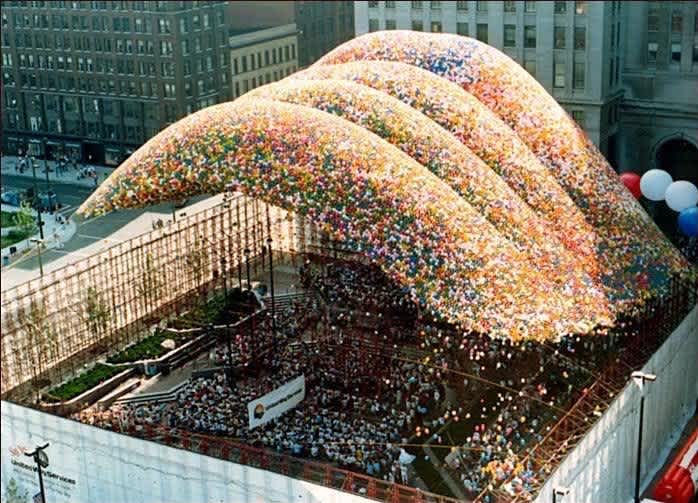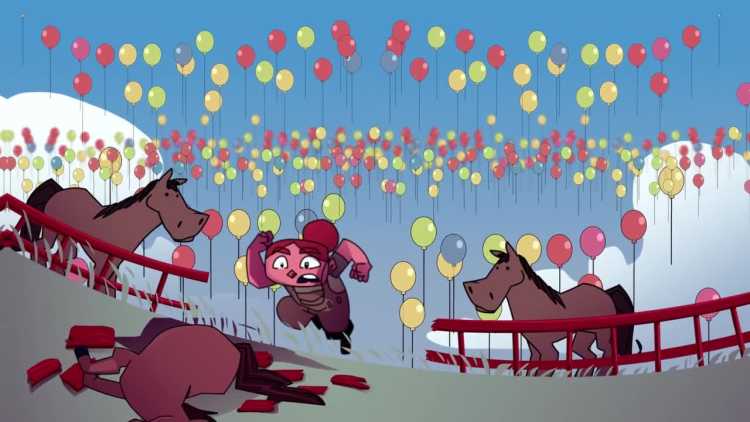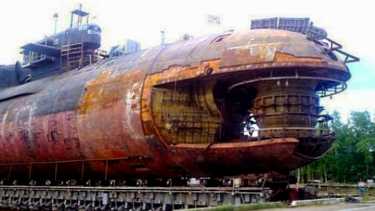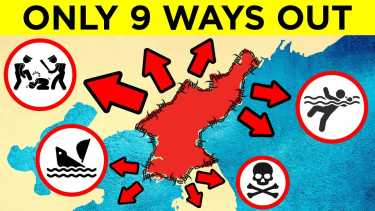How Releasing 1,500,000 Balloons Went Horribly Wrong - Balloonfest '86
This is the story of balloonfest '86, the world record mass balloon releasing event that went horribly wrong.
SocietyWatching a colorful balloon drift away into the sky ignites a basic childlike joy within us all, but can you imagine the mind-blowing spectacle of watching 1.5 million balloons being released all at once? That’s exactly what executives from Cleveland USA’s United Way Charity set out to achieve on Saturday 27th September 1986.
With months of careful planning and an ambitious vision in mind, this had all the makings of a historic event that would put the city on the map once and for all. But on that fateful day, the people of Cleveland were about to be reminded of the basic laws of gravity: what goes up, must always come down.
Breaking The Record
United Way is a non-profit organization that aims to tackle poverty and support local communities by focusing on improving essential areas of daily life like education, income and health. What would later become known as ‘Balloonfest ‘86’ was organized by the charity as a fundraising event that would not only benefit the community but would also be a major publicity stunt for what many believed was an underappreciated city.
The idea for a record-breaking mass balloon release was actually inspired by some friendly competition with Disneyland’s first official park in Anaheim, California, which had previously set the world record in December 1985.
To honor the 30th anniversary of the park’s opening in 1955, as well as what would’ve been Walt Disney’s 84th birthday, classmates from Anaheim High School helped to fill 1 million balloons with helium in large tents before they were mass-released from the parking lot during an event aptly named ‘Skyfest’.
United Way executives knew that their own balloon release had to be much bigger and more memorable than Skyfest, so they decided to double the number and aim for a modest record of 2 million balloons instead. To help coordinate the stunt, the charity first called upon the LA-based specialized company ‘Balloon Art by Treb’ - spearheaded by professional balloon artist Treb Heining – for some much-needed expertise.

Heining, alongside Balloonfest’s own project manager Tom Holowach, spent about six months in total preparing for the monumental event, but no one could’ve foreseen the chaos that would ensue when the big day finally arrived.
Housing the Balloons
In order to release such an insane number of balloons at one time, they had to be inflated and properly counted first, and that meant having somewhere to store them in the meantime. In an interview, Holowach explained that he was tasked with designing a structure to safely house the balloons that complied with local building codes while also being able to withstand up to 60mph winds.
The final product was a ginormous, woven mesh net created by the same company that had previously built the cargo nets for the Space Shuttle. The massive, rectangular structure was set up on the southwest quadrant of Cleveland’s Public Square and was the size of an entire city block; measuring some 250 feet long, 150 feet wide and towering three stories high.

Beneath the enormous net – which now bulged above the city skyline like some heaving multicolored mountain – were around 2,500 volunteers frantically filling as many balloons as possible with helium before releasing them into the mass of colored latex above.
Many wore band-aids on their hands to protect their fingers from blistering during the repetitive task of knot-tying. Most of the people involved were students from nearby schools, while children also sold sponsorships to benefit United Way at the price of $1 for 2 balloons.
The entire thing reportedly cost United Way about $500,000 to pull off, which is pretty ironic considering it was a fundraising event that supposedly relied on donations alone. Nevertheless, thousands of people gathered around as they anticipated what was sure to be a moment for the history books, but there was one unforeseen problem.
Organizers hadn’t properly considered the possibility of adverse weather, and a storm that blew through Cleveland the night before threatened to cancel the event and caused organizers to work through the night. Although fingers remained crossed that the big day would see clearer skies, things weren’t looking up.
Balloonfest Disaster
With no other option, an emergency decision was made: the balloons would have to be released early, meaning the official number of balloons was actually just shy of 1.5 million rather than the original goal of 2 million.
At about 1:50 pm that afternoon, United Way untethered the giant net above the city, and onlookers stood by in awe as a blizzard of brightly-colored orbs filled the sky above them.
Within no time, the billowing cloud of helium balloons had wound its way around Cleveland’s Terminal Tower and dispersed into the surrounding skyline. As organizers had anticipated, it was quite the spectacle. But as people on the streets below gleefully celebrated the astonishing feat, little could prepare them for the total mayhem that was about to unfold.
You might be wondering at this point: where exactly would 1.5 million balloons go once they’d been released into the atmosphere? Would they simply float off into space? Or cause some sort of environmental disaster?
When a typical helium balloon is released into the air, it can rise to an altitude of up to 10 km before it bursts into tiny fragments and drifts back down to Earth. As altitude increases, the outside air pressure diminishes while the pressure from inside the balloon remains the same; this causes the elastic material to expand before it eventually explodes.
This is, basically, what United Way thought would happen. They even claimed that the balloons they used were biodegradable, even better! The balloons may have taken off into the sky as intended, but it wasn’t long until things went south very quickly.
As the balloons covered the sky, they immediately came into contact with the forecasted cold front and were blown back in a southerly direction by strong wind and rain. In fact, more than 1 million of the floating orbs dropped back down to Earth almost immediately, littering the streets of Cleveland and clogging waterways all over northeast Ohio.
As you might expect, this had some pretty devastating repercussions on the streets below as unsuspecting residents were suddenly confronted by a blizzard of garish colors. As drivers swerved to avoid the floating objects or took their eyes off the road to gawk at the spectacle overhead, there were reports of minor car accidents across the city and beyond.
The strong winds also managed to push a large number of the balloons onto a runway at Burke Lakefront Airport which had to be temporarily closed for half an hour, causing unexpected travel delays. Suddenly, it seemed like the publicity Balloonfest 86’ would inevitably attract was not at all what United Way had in mind.
Balloonfest Deaths
The mass balloon release had kickstarted an unfortunate chain of events that would solidify this event as one of the most spectacular marketing fails in history. One of the more bizarre repercussions occurred after some of the balloons traveled as far as Medina County, Ohio, where they landed on a pasture owned by a woman named Louise Nowakowski.
Nowakowski kept some thoroughbred Arabian horses on this land, and one of the animals was so spooked by the sudden shower of balloons that it allegedly ran straight into a nearby fence, causing it to suffer permanent injuries.

Nowakowski was pretty peeved, as any proud horse owner might be. In fact, she was so furious that she later sued the United Way of Cleveland for a whopping $100,000 in damages, which was eventually settled for undisclosed terms. Things had certainly gone from bad to worse for the organizers behind this catastrophic event, but the worst was yet to come.
The wind and rain had also carried a large number of balloons northwards towards Lake Erie, where heavy torrents pushed them down into the water, un-popped. This is hardly an ideal situation as far as environmentalists were concerned and the clean-up operation was sure to be costly, but there was a far more pressing situation at hand.
On Friday 26th September, the day before the event, two fishermen by the names of Raymond Broderick and Bernard Sulzer had failed to return from their trip on Lake Erie. The men were reported missing by their families early on Saturday morning, and rescuers had spotted their 16-foot boat anchored west of the Edgewater Park breakwall.
The coastguard guessed that the boat had capsized in choppy waters and the men had managed to swim towards the breakwall before the boat managed to right itself. As Balloonfest 86’ spectacularly backfired in the center of Cleveland, however, the mission to locate the men had suddenly become 10 times harder.

The hundreds of thousands of still-inflated colored balloons that had been blown down onto the surface of the lake made it nigh-on-impossible to distinguish between the head of a drowning man and a bobbing balloon. Meanwhile, the search-and-rescue helicopter could no longer fly overhead thanks to the “asteroid field” of floating spheres littering the air.
Two days later on September 29th, it was reported that the local Coast Guard had called off the search for the two missing men thanks to complications caused by the mass balloon release. Within the next two weeks, the bodies of both Raymond Broderick and Bernard Sulzer would wash up on the shores of Lake Erie.
The balloons themselves hadn’t directly killed anyone, but as far as some were concerned, United Way now had blood on their hands. Among these people was Raymond’s wife Gail Broderick, who decided to take legal action against the charity's executives and filed a lawsuit for an eyewatering $3.2 million. Gail’s lawsuit, just like the one filed by Louise Nowakowski, was eventually settled out of court for an undisclosed amount.
What had begun as a fundraising event that was planned with the purest of intentions had quickly turned into a historic catastrophe that cost the lives, money, and ultimately the reputation of all those involved in putting the stunt together. Besides the ensuing lawsuits, which were seeking millions, the event ended up at a total net loss due to alleged cost overruns during its organization.
Impact on the Environment
There were plenty of environmental repercussions, too. Contrary to their belief that the balloons would magically biodegrade and vanish off the face of Earth, thousands of deflated balloons continued to wash up on the shores of Lake Erie for weeks after the event.
According to some reports, many even made their way to Canada’s pristine beaches. Considering latex can take anywhere between 6 months and 4 years to decompose properly, it’s safe to assume that local wildlife and their supporting ecosystems were not too thankful for the mass-dumping of deflated balloons.

Although Tom Holowach claimed no one was warned about the prospect of a potential helium shortage, United Way was also criticized for wasting so much of the non-renewable resource on such a trivial event.
In one letter, William F. Corot of Woodbine, Iowa wrote: “It is most distressing to see pictures of the mass release of helium-filled balloons merely to gratify the urge to observe a visual spectacle once released, the helium is gone forever and this rare gas is hard to come by and is much needed in non-frivolous scientific and industrial activity”. Those are some pretty damning words.
Disastrous Aftermath
Nowadays, mass balloon releases are actually banned by certain U.S. states and UK councils as well as in many other countries like Australia, while animal welfare and environmental groups like the RSPCA and Marine Conservation Society are still campaigning for a complete ban.
All in all, the event – which was supposed to prove that Cleveland was a city worth talking about – ended up fading into a distant memory. Except for those who were humiliated by the entire fiasco, that is. Years after the event, George Fraser – United Way’s director of marketing and communications at the time – referred to the infamous Balloonfest ’86 as his greatest success and his biggest failure.
It’s a perfect example of how something can go so hideously wrong without careful consideration. And yet, the famous phrase “all publicity is good publicity” springs to mind. In its 1998 edition, the Guinness Book of World Records eventually recognized the event as the “largest ever mass balloon release” with a recorded total of 1,429,643 balloons launched.
By this point, though, the terrible events that followed Cleveland’s Balloonfest ’86 had left a sour taste in people’s mouths. Also, the record will never be beaten, because the Guinness World Record’s rules now state that mass balloon releases – alongside other potentially environmentally impactful records such as sky-lantern releases – will no longer be accepted.
Unsurprisingly, both Holowach and Treb Heining resolved that all future marketing events would be ground-based only. That definitely seems like a good thing. Maybe a mass bake sale would suffice next time!
I hope you were amazed at how balloons, which are supposed to make us happy, made a lot of people miserable at the 1986 Balloonfest in Cleveland. Thanks for reading!













![Embarrassingly Dumb Ways People Died - Darwin Awards Winners [Part 14]](http://images.ctfassets.net/l031eph9pzsg/686De1sLP59fCNWLkbDwm5/4031ad820164610867ececf9513ce5ce/embarrassingly-dumb-ways-people-died---darwin-awards-winners-_part-14_.jpg?w=750&h=422&fl=progressive&q=50&fm=jpg)












